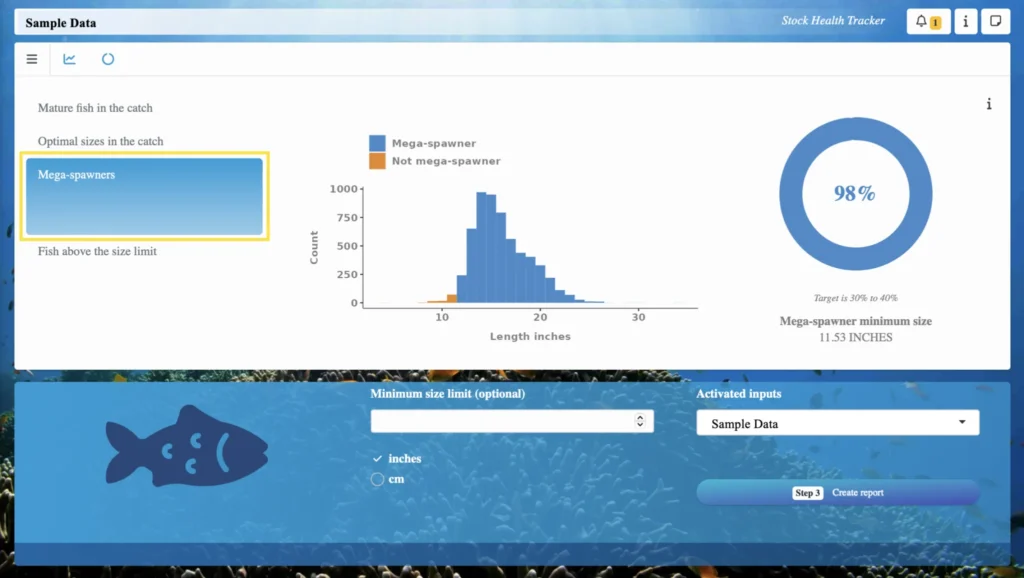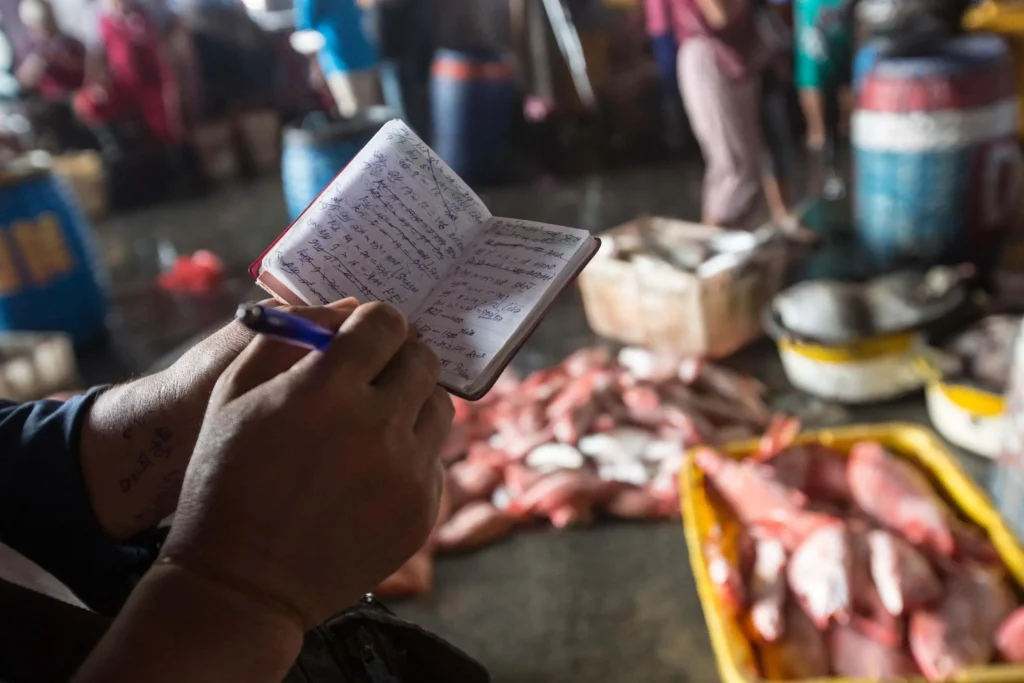Welcome to the FishKit User Guide!
FishKit is a set of publicly available software tools used to support decision-making for small-scale and coastal fisheries. FishKit tools are designed to tackle the dual challenges limiting sustainability in small-scale fisheries: data gaps and limited know-how among local leaders to use data to design and implement management actions. FishKit contains analytical tools known as the Stock Health Tracker, Size Limit Builder, Bag Limit Builder, and Temporary Closures. The FishKit Data Repository is a separate web application for managing information used in FishKit. FishKit draws upon existing, published fisheries science concepts, transforming this information into user friendly, interactive dashboards. FishKit is intended to facilitate the visualization, design, and decision-making process for implementing some types of fisheries management measures.
Select from the options below to find detailed guidance on all aspects of FishKit.

FishKit for Fisheries Management

Using the FishKit Toolkit
Step-by-step guidance for using and interpreting results from the Stock Health Tracker, Size Limit Builder, Bag Limit Builder, Temporary Closures, and Data Repository.

The Science Behind FishKit
Learn about foundational principles of fisheries ecology and management related to the use of FishKit.
Size Limit Builder
What is the Size Limit Builder?
What are the steps for using the Size Limit Builder?
How do I interpret the results from my Size Limit Builder session?
How do I use and interpret the advanced analysis function?
How do I use and interpret the uncertainty test function?
How do I use and interpret the transitional dynamics function?
Data Repository
How do I access FishKit’s life history repository?
How do I create a life history?
How do I prepare length data to be uploaded to the Data Repository?
How do I upload length data for use in FishKit?
How do I access example length data?
How do I create a fishery selectivity function?
How do I prepare catch data to be uploaded to the Data Repository?
How do I upload catch data for use in the Bag Limit Builder and Temporary Closures?
How do I access example catch data?
The Science Behind FishKit
What life history information is important for FishKit?
What do I need to know about length data and sampling for use in FishKit?
What are per-recruit analysis and spawning potential ratio?
What concepts and considerations are important for the Stock Health Tracker?
What concepts and considerations are important for the Size Limit Builder?
What concepts and considerations are important for the Bag Limit Builder?
How can I access the technical documentation?
The FishKit User Guide is provided for general informational purposes and is not advice or guidance as to whether FishKit is appropriate for your use or circumstances. You are solely responsible for deciding whether FishKit meets your needs, and you should consider a variety of factors in consultation with professionals and counsel of your choosing. You must perform your own evaluation of FishKit to determine whether it is appropriate to use with your fisheries/resources. You assume all risk from the use of FishKit and this user guide, which is not guaranteed to be complete or accurate in all respects. For both FishKit and this user guide itself, The Nature Conservancy makes no warranty of any kind (express, implied, statutory or otherwise), and The Nature Conservancy specifically disclaims all implied warranties, including any implied warranty of merchantability, fitness for a particular purpose, or non-infringement, to the maximum extent under applicable law.
Fishery
A unit determined by an authority or other entity that is engaged in raising and/or harvesting fish. Typically, the unit is defined in terms of some or all of the following: people involved, species or type of fish, area of water or seabed, method of fishing, class of boats and purpose of the activities.
Fletcher, W.J., Chesson, J. Fisher, M., Sainsbury K.J., Hundloe, T. Smith A.D.M., and B. Whitworth (2002): National ESD reporting framework for Australian fisheries: The “How To” guide for wild capture fisheries. FRDC Project 2000/145. Canberra, Australia
Population
A self-sustaining group of individuals, from a single species, whose dynamics are primarily determined by birth and death processes.
Cadrin, S.X., Kerr, L.A., and Mariani, S. (Editors). 2013. Stock Identification Methods. Elsevier.
Stock
An exploited fishery unit. A stock may be a single spawning component, a population, a metapopulation, or comprise portions of these units. For management purposes stocks are considered discrete units, and each stock can be exploited independently or catches can be assigned to the stock of origin.
Cadrin, S.X., Kerr, L.A., and Mariani, S. (Editors). 2013. Stock Identification Methods. Elsevier.
